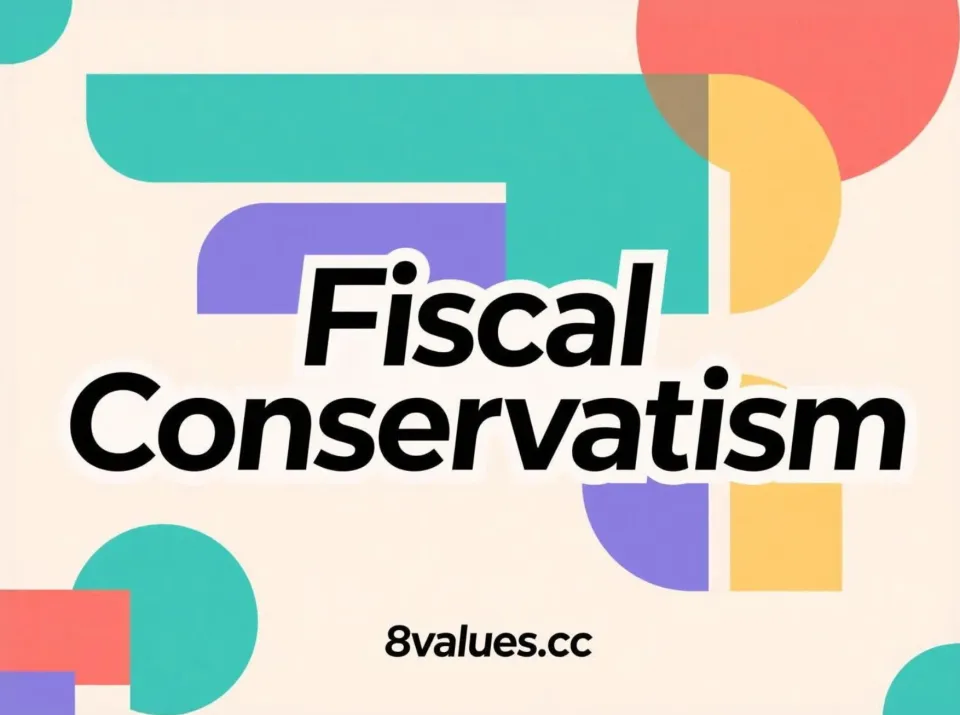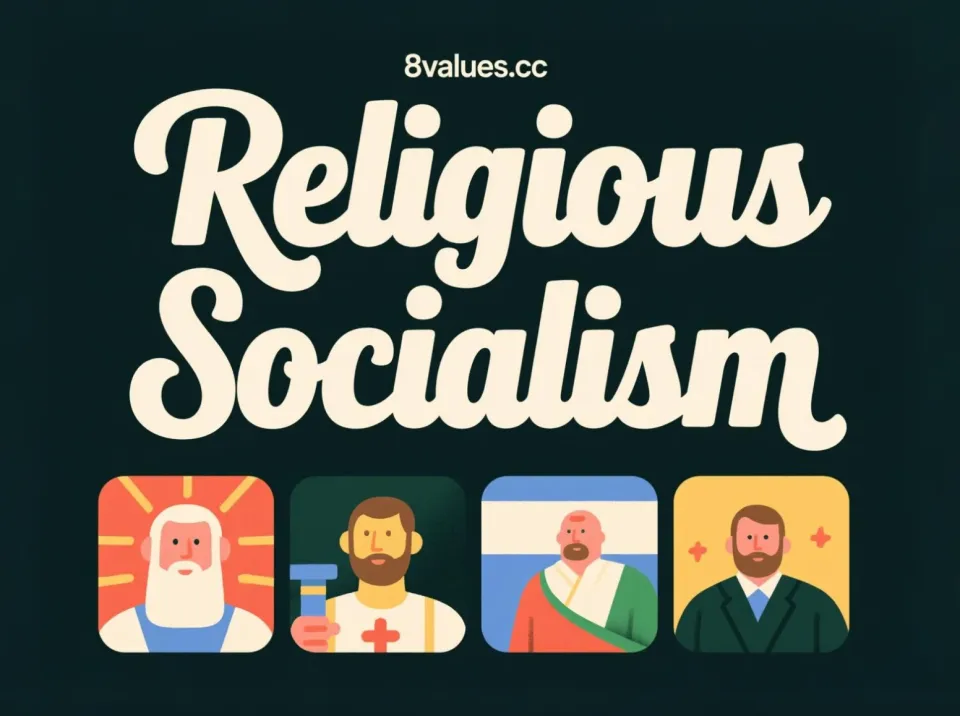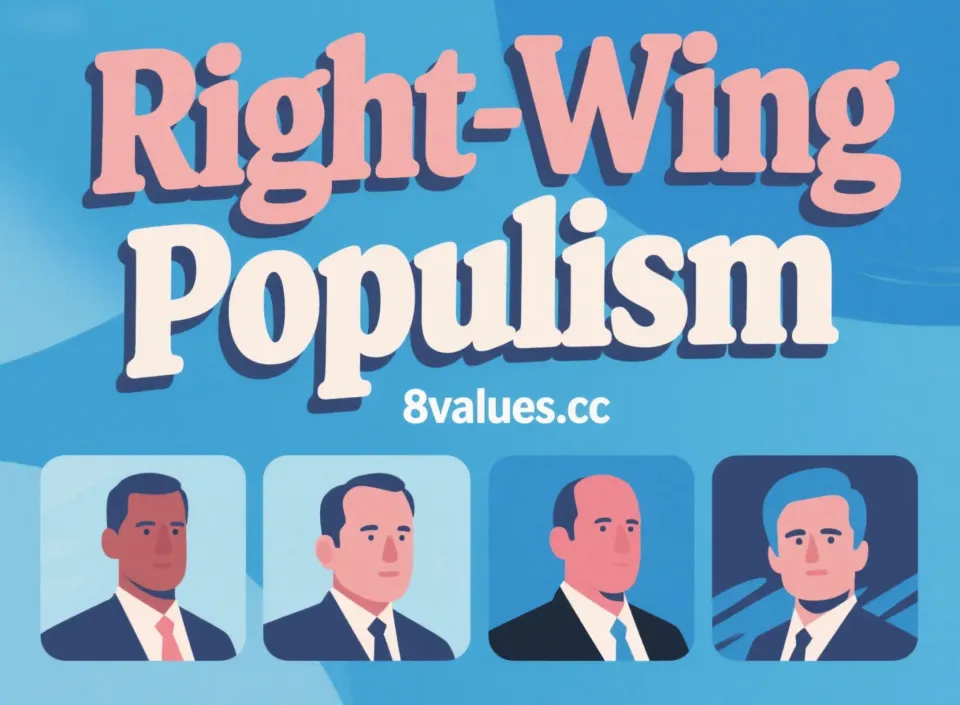An in-depth interpretation of the political and economic philosophy of Fiscal Conservatism
Fiscal Conservatism is a political and economic philosophy that advocates fiscal prudence, reducing government spending and advocating low taxes. It pursues a balanced budget, controlling the national debt, and is closely aligned with classical liberal ideals. This article provides an in-depth analysis of the core principles, historical evolution, main schools (such as supply-side schools and deficit hawks) of fiscal conservatism, as well as its practices and challenges in the contemporary global economy, to help you gain a deeper understanding of this core political value.
Fiscal Conservatism is a political and economic philosophy about fiscal policy and fiscal responsibility. This concept is rooted in the ideological foundation of capitalism, individualism, limited government and laissez-faire economics . Its core is to advocate that the government should maintain prudence, frugality and responsibility in financial management.
Fiscal conservatives believe that the economy works best with minimal government intervention , and that governments, like households, should " live within their means " to avoid passing on debt burdens to future generations .
Core Principles of Fiscal Conservatism
Fiscal conservatism aims to achieve long-term economic stability and sustainability by controlling government spending and debt. Its core principles mainly include the following points:
Pursuing a balanced budget and limiting the deficit (Balanced Budget)
The primary goal of fiscal conservatism is to avoid deficit spending and strive to achieve a balanced budget . A balanced budget means that the government's total revenue from taxes and other sources should match total expenditure . They believe that continued fiscal deficits will lead to the accumulation of national debt , increase the burden of future debt repayments, and may trigger inflation or an economic crisis. When examining their own political values and ideological tendencies, the public can use tools such as the 8 Values political leaning test to assess their tendencies in this dimension.
Limiting government spending and the concept of small government
Fiscal conservatism advocates reducing government spending , especially on non-essential programs or overextended welfare programs. They advocate minimizing the size and role of limited government and believe that the government should limit its functions to core areas such as national defense, justice, law enforcement, and infrastructure , rather than solving all social problems through large-scale financial intervention. This concept of "small government" emphasizes that the expansion of government power will inevitably lead to the shrinking of individual freedoms .
Low Taxes and Free Markets
Fiscal conservatives typically support low-tax policies , especially those on businesses and high-income earners, arguing that they stimulate economic growth and encourage private investment, innovation and job creation. They believe that individuals and businesses are better at allocating resources efficiently than government bureaucrats.
In addition, fiscal conservatism is consistent with free market principles and advocates reducing government intervention in markets through deregulation , free trade , and privatization .
Controlling the National Debt and Intergenerational Equity
Controlling public debt is the moral bottom line of fiscal conservatism. Edmund Burke argued that the government had no right to accumulate huge debts and throw the burden on taxpayers, and that the property rights of citizens took precedence over the claims of the nation's creditors.
Fiscal conservatives oppose borrowing to finance current spending, which would shift the burden to future generations . As some economists have proposed, deficits are future taxes (DAFT) because, no matter what, the money will eventually need to be paid back through taxation or money printing (inflation).
Schools and Branches of Fiscal Conservatism
Modern fiscal conservatism is not monolithic. It has spawned several main schools based on different ways and priorities of achieving fiscal goals. By using tools like the 9 Axes Political Ideology Test , you can help distinguish these complex ideological positions.
| school | core ideas | Policy tendency |
|---|---|---|
| Deficit Hawks | Prioritize fiscal discipline : Advocate a two-pronged approach, both cutting expenditures and increasing taxes appropriately , to ensure fiscal sustainability. | Support mandatory balanced budget rules (such as PAYGO). |
| Supply-side Economics | Tax cuts come first : We believe that tax cuts can stimulate economic growth , expand the tax base, and thus bring about higher tax revenues (i.e., the "Laffer Curve" effect). | Insist on substantial tax cuts even if they may lead to an increase in the deficit in the short term. |
| Libertarianism | Minimizing government : Promoting the " Starve the beast " strategy, forcing the government to cut spending by drastically reducing taxes . | Dramatically cut welfare spending and abolish government controls. |
| Spending Focus | Spending is Cost : The view that the true cost of government depends on the level of spending , regardless of how it is financed; the focus is on reducing spending , not tax policy or the debt itself. | Emphasis on cutting non-defense discretionary spending. |
The Historical Evolution of Fiscal Conservatism
The concept and practice of fiscal conservatism have been throughout the history of the Western world, especially in American politics.
Classical Liberalism and Early American Practice
The philosophical foundation of fiscal conservatism originates from Classical Liberalism , whose ideas can be traced back to thinkers such as Adam Smith and Friedrich Hayek.
In the early days of the United States, Democratic-Republican Thomas Jefferson strongly opposed national debt and a strong central government in favor of a more laissez-faire approach. But later presidents such as James Madison and James Monroe also turned to support the establishment of a central bank and stable taxation after experiencing fiscal disasters, reflecting early fiscal prudence.
Challenges and Renaissance in the Mid- to Late 20th Century
In the 20th century, with the emergence of Roosevelt's New Deal, the concept of liberalism in American politics gradually became associated with the welfare state and expanded regulatory policies . In order to distinguish themselves, many classical liberals began to call themselves conservatives . Fiscal conservatism has thus become one of the three pillars of the traditional American conservative movement, the other two pillars being social conservatism and defense conservatism.
- Era of Reaganomics (1981-1989) : President Ronald Reagan promoted supply-side economics and significantly reduced personal income taxes and capital gains taxes. During Reagan's term, although total federal tax revenue increased, the proportion of national debt held by the public to GDP increased significantly due to the simultaneous substantial expansion of defense spending . This period is regarded as an important practice of the supply-side school, but its expansion of fiscal deficits also caused controversy.
- Surpluses in the Clinton Era : In the 1990s, New Democrats, represented by former President Bill Clinton, also adopted some fiscal conservatism. The Clinton administration cut government spending and raised taxes on the wealthy through the Omnibus Budget Reconciliation Act of 1993. During the Republican-dominated Congress (which promoted fiscal responsibility through the "Date with America" platform), the two parties worked together to implement spending cuts and tax cuts that ultimately led to a federal budget surplus between 1998 and 2001 and one of the longest periods of sustained economic growth in U.S. history.
Fiscal Conservatism and the Political Spectrum
Fiscal conservatism is one of the key dimensions in understanding political ideology. If you have roughly understood your position through the Eight Values political values test or the Nine Axes political coordinates test , you can next focus on its relationship with other political philosophies.
Similarities and differences with other branches of conservatism
Fiscal conservatism is an important branch of conservatism that focuses on economic policy.
- Social Conservatism : Social conservatism focuses on morality, tradition, and maintaining social order , and tends to protect or promote traditional values through government action. Fiscal conservatism focuses on the pocketbook , while social conservatism focuses on family values .
- Libertarianism : Many classical liberals , or libertarians , who support low taxes and less regulation are fiscally conservative. However, they usually hold socially liberal views on social issues and oppose government interference in personal lives and choices. To explore these differences, consider tools such as the RightValues Right-Wing Political Spectrum Test .
Cognitive discussion of “socially liberal, fiscally conservative”
The label "Socially Liberal, Fiscally Conservative" is seen by some groups as a symbol of rationality, pragmatism, and balance .
Proponents of this position believe that its core lies in the consistent limitation of government power : the government should not interfere with the free choice of individuals (at the social level), nor should it interfere with the free operation of the market (at the economic level). They believe that this position is not a contradiction, but a unified extension of the concept of Liberty .
Critics, however, argue that this stance suffers from cognitive dissonance in reality. They point out that many social problems (e.g., poverty, racial inequality, climate change) are often structural economic problems that require large-scale government intervention and public investment (i.e., higher taxes or government spending) to correct. Therefore, if one supports equality and progress in society but is financially opposed to the investment needed to achieve these goals, then that support is “ disingenuous activism ” or “ not caring about system-level solutions .” This view can be further demonstrated in the LeftValues left-wing political values test when exploring wider left-wing political ideas.
The international practice of fiscal conservatism
Fiscal conservatism is not limited to the United States; it has important practical examples around the world.
European fiscal discipline
- Germany’s “debt brake” : Germany is a typical representative of European fiscal conservatism. In 2009, the German Constitution introduced the " Debt Brake " (Schuldenbremse) mechanism to limit structural deficits and control the federal government's deficit within 0.35% of GDP.
- The Thatcher Era in the UK : During Margaret Thatcher’s tenure as Prime Minister, the UK implemented massive cuts in public spending and privatization , while selectively raising taxes to balance the budget, ushering in an era of austerity policies to curb inflation.
- New Hanseatic League : In the post-Brexit EU, countries such as Denmark, Estonia, Ireland, Latvia, Lithuania, the Netherlands and Sweden formed the "New Hanseatic League". They tend to be fiscally conservative, advocate a more developed European single market, and oppose collective debt.
Practice in Asia and beyond
In other countries, people often use " economic liberalism " or " liberalism " to describe fiscal conservatism in the American context.
- Australia : The John Howard government (1996-2007) is considered a success story of fiscal conservatism by achieving a budget surplus and paying down the debt of the previous government through job cuts and social spending cuts.
- South Korea : In South Korea, the conservative People Power Party mainly represents the position of fiscal conservatism.
- Indonesia : Indonesia’s fiscal policy has also turned conservative, with the 2020 budget forecasting a narrowing of the fiscal deficit.
Contemporary Challenges and Future Prospects of Fiscal Conservatism
Although the philosophy of fiscal conservatism emphasizes long-term fiscal sustainability and intergenerational responsibility, it faces serious challenges in the contemporary political and economic environment.
Persistent deficits and debt distress
Across the world, and especially in the United States, there is a growing phenomenon of runaway government spending and soaring national debt. In the United States, for example, the federal government's debt has exceeded $20 trillion , and the debt-to-GDP ratio is expected to continue to rise in the coming decades, driven by an aging population (particularly mandated spending such as Social Security and Medicare).
Many argue that traditional fiscal conservatism is weakening or has " died " in the face of high debt. Politicians tend to let down their guard even when the economy is booming, unwilling to "fix the roof while the sun is shining," and prefer "win-win" solutions that promise tax cuts and increased spending, which makes fiscal discipline difficult to maintain .
The trade-off between welfare reform and economic growth
Fiscal conservatives believe entitlement programs like Medicare and Social Security must be reformed to ensure their long-term sustainability. However, cutting these programs is often politically difficult because once benefits are given to people, they are extremely difficult to take back.
Furthermore, fiscal conservatives need to balance short-term discipline with long-term investment in the face of challenges such as global economic uncertainty, climate change, and technological transitions that require significant public investment. Critics warn that excessive insistence on austerity could lead to underinvestment in areas such as infrastructure and education, damaging long-term economic growth potential .
Summary: What it means to be fiscally prudent
No matter where you fall on the political spectrum, understanding the lens of fiscal conservatism is critical. Services such as the 8Values Quiz political ideology test official website and the political values and ideological tendency test are designed to help users fully understand their own ideological makeup. The concepts of fiscal prudence, living within one's means , and intergenerational equity emphasized by fiscal conservatism are still the cornerstones that must be considered in formulating sustainable economic policies today when global debt is high. If you would like to know more details about political ideology, please visit our official blog .






